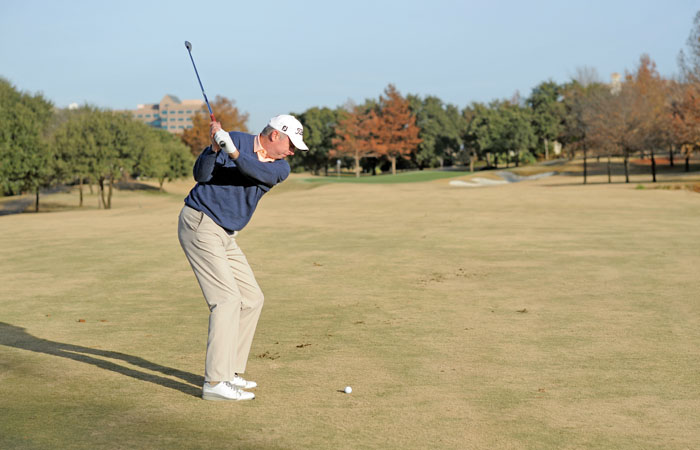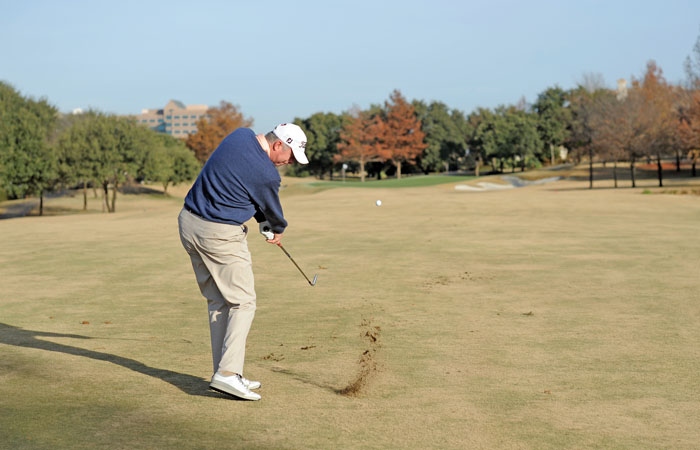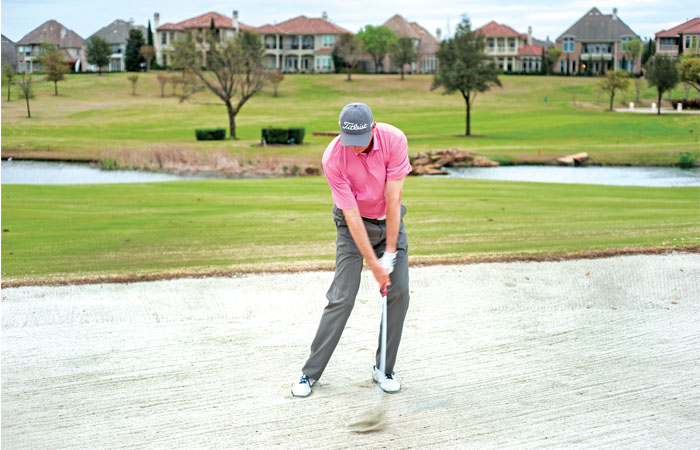Everyone wants to hit the ball longer. In order to hit longer drives, there are a couple of key factors: speed, sequence and timing. These three things are important in order to hit the ball farther.
In many sports where speed is important, athletes train using lighter equipment to promote faster movements. You can use this approach in golf by turning the club upside down, where you are gripping the shaft near the clubhead.
Hold the shaft horizontally out in front of you at chest high. Think about baseball now; it is easier to experience speed and what it feels like to swing faster when making a baseball swing. Once you hold the club horizontally in front of you at chest height, swing back and through, making a baseball swing hearing a swish sound in the air. Try to create the loudest swish you can when making these swings.
When you throw a ball, you’d start by planting your foot then from there you’d drive your hips, and the last thing to fire would be your hand and ball. The golf swing sequence is no different. Power starts from the ground up, and the swing sequence starts from the lower body and is followed by the upper body.
This drill is all about sequence. The goal of this drill is for the golf ball to skip down the fairway, bouncing as fast as possible. When you move from the ground up, you will create more speed and power.

To perform this drill, get in your golf posture and hold a golf ball in your trail hand. From here, rotate to the top of your backswing; start the downswing by pressing into the ground with your lead foot and then rotating your lead hip, allowing the arms to then follow, releasing the ball after your body has moved through the shot.

This drill is all about timing. To perform this drill, get a towel and knot the end for added weight. Start by getting in your golf posture and gripping the towel as you would with a golf club and having the knot hand at the bottom. From here, swing to the top of your backswing, waiting to feel the knot hit your trail shoulder. The knot hitting your lead shoulder helps you to feel what it is like to create lag and have the proper sequence. From here, feel your weight plant over your lead foot and your lead knee as well, as your lead hip starts to unwind. Feel the towel stay on your shoulder as you start the transition. The first move should always be the lower body, not the shoulders rotating to start the downswing. The shoulders rotating to start the downswing will cause a loss in distance. The biggest key in this drill is retaining the connection of the towel on the trail shoulder for a beat longer into the downswing. This ensures the lower body will lead and the hands and arms will follow.

If you have any scoring barriers you are looking at breaking this summer or fall, reach out to Kirsten Pike, PGA, at 972-399-9040
Kirsten Pike is the lead Teaching Professional at Las Colinas Country Club. To improve your scores follow her on Instagram at kirstenpike_golfinstruction and visit kpikegolf.wixsite.com